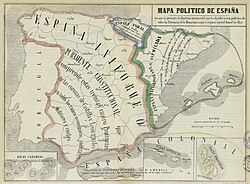History
In 1097, the Almoravid leader, Yusuf ibn Tasfhin, crossed the Strait of Gibraltar where he went to Cordoba intending to sack the suburbs of Toledo. [1] [2] The Castilian-Leonese king, Alfonso, who had already mustered his army to besiege Zaragoza, learned of the upcoming Almoravid invasion and decided to meet them. The Castilian knight, El Cid, sent his son Diego Rodríguez with an army to assist the king all while staying in Valencia. [3]
Yusuf had already gathered his army, which consisted of Almoravids and Andalusian men. Yusuf then gave the command to his general, Muhammad ibn Al-Haj. [4] Yusuf chose not to participate as he intended to cover the retreat of his troops in case they lost. [5] Both armies met at Consuegra. The Almoravids with their tactics, routed the Christians and threw their vanguard in confusion. Diego Rodriquez was slain in the battle and the king retreated towards the Consuegra castle. [6] [7]
The Almoravids invested in the castle for eight days before retreating. The battle happened on Saturday, August 15, 1097. [8] [9]
This page is based on this
Wikipedia article Text is available under the
CC BY-SA 4.0 license; additional terms may apply.
Images, videos and audio are available under their respective licenses.

